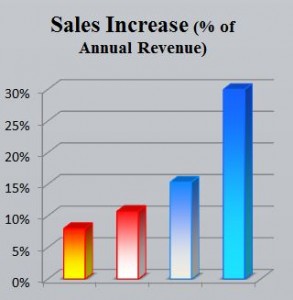Contact us for a FREE consultation to find out how you can improve your Marketing.
Marketing 101 is a consulting program that is designed to help companies get the right message to the right target segment customer using the right words. We have used this program to help develop a Billion Dollar global product line for a major brand name company – IT WORKS!
 Ask yourself
Ask yourself
- Why would a customer do business with me?
- What value do I offer them?
- Why are my solutions better or unique?
- How many different types of customers (known as segments) do I have?
- What are their needs?
- How do my customers prefer to do business?
If you can’t answer these questions (and many more not listed here) then you can safely assume that your customers don’t know either. Understanding all of these will help you develop a winning strategy no matter what tactics you choose to use. And, internet/digital marketing is NOT a strategy, it is a tactic. A strategy is what you plan to do, a tactic is how you plan to do it.
This means that your strategy should be centered around how you will define your customer, what you will say to your customer, and how you will reach them with the right message. then you choose the tactics that offer the best chance for success.
In this day and age it seems that everyone is enamored with social media marketing, internet marketing, websites, search engine optimization (SEO), networking, and mobile text marketing, just to name a few.
While these tactics can be good ways to market your business, and in some cases are very cost effective, there is still the need to consider the basics, what we call Marketing 101. These are the time-tested basics of marketing and really are the foundation on which a successful marketing campaign will depend. Just like Adam Smith’s law of supply and demand from his book “The Wealth of Nations” published in 1776 is still valid today, so are the marketing basics that are the cornerstone of any marketing plan.
 So what are these basics that all businesses must pay attention to, but seem to be bypassed in the rush to get on the Internet? Here is a list with definitions:
So what are these basics that all businesses must pay attention to, but seem to be bypassed in the rush to get on the Internet? Here is a list with definitions:
(Note: Click the links below in blue for more information. These samples are shown to provide an understanding of the services we provide. For more complete information on all of these marketing basics please contact us to learn how we can help your business.)
- Customer Need – if you can’t define their need(s) then how can you satisfy them? if your product does not solve a need, then it will fail.
- Value Proposition – This is the value the customer will get from your product/service. Put it in their words. Do you solve their need?
 Target Market – Defined as the group of customers that have a need for your product.
Target Market – Defined as the group of customers that have a need for your product.- Segmentation – Within a target market there are different segments that must be identified because while they may have similar needs, the value proposition and the message about your product will likely need to be different to catch their attention.
- Unique Selling Proposition – aka product differentiation. What is different about your product than your competition. Why should someone buy yours instead of theirs? What is your hook?
- Positioning – this refers to the way you communicate the value proposition to your target market segments.
- Benefits/Features – Too many people talk about features and not enough about benefits.
 A customer really does not care about a feature. They care about what that feature will do for them, known as the benefit. In other words, this product will do xxxxx (the benefit), because it has yyyyy (the feature). Some features are self-explanatory and people know what the benefit is automatically, but with many you have to tell them. Don’t assume they will make the connection between what the benefit is of a feature.
A customer really does not care about a feature. They care about what that feature will do for them, known as the benefit. In other words, this product will do xxxxx (the benefit), because it has yyyyy (the feature). Some features are self-explanatory and people know what the benefit is automatically, but with many you have to tell them. Don’t assume they will make the connection between what the benefit is of a feature. - Competitive Advantage – what makes your business better able to deliver the value proposition than the next guy? Is it sustainable or will you be copied quickly? Is your product Better, Faster, Cheaper, Smaller? If you can’t answer these questions then don’t expect your customers to either.
- Buying Behaviors – what are the common behaviors of each segment? Where/how do they buy their products? Are you able to sell to them the way they usually buy? This is important because if you are selling only on the internet, but they like to touch and hold the product before making a purchase decision you will not reach them.
- The Whole Product – this refers to the buying experience from start to finish, as opposed to what many businesses do, which is just sell the product and assume they are done. If you have a great product but have made the transaction difficult, you may lose the customer for future business. For example, you have a great product, but if the customer cannot find a place to park nearby, or has to pay to park, they may do business elsewhere. So, the ability to get to your location is part of the whole product. You must assure that every “touch point” the customer has with you is satisfactory or better.
